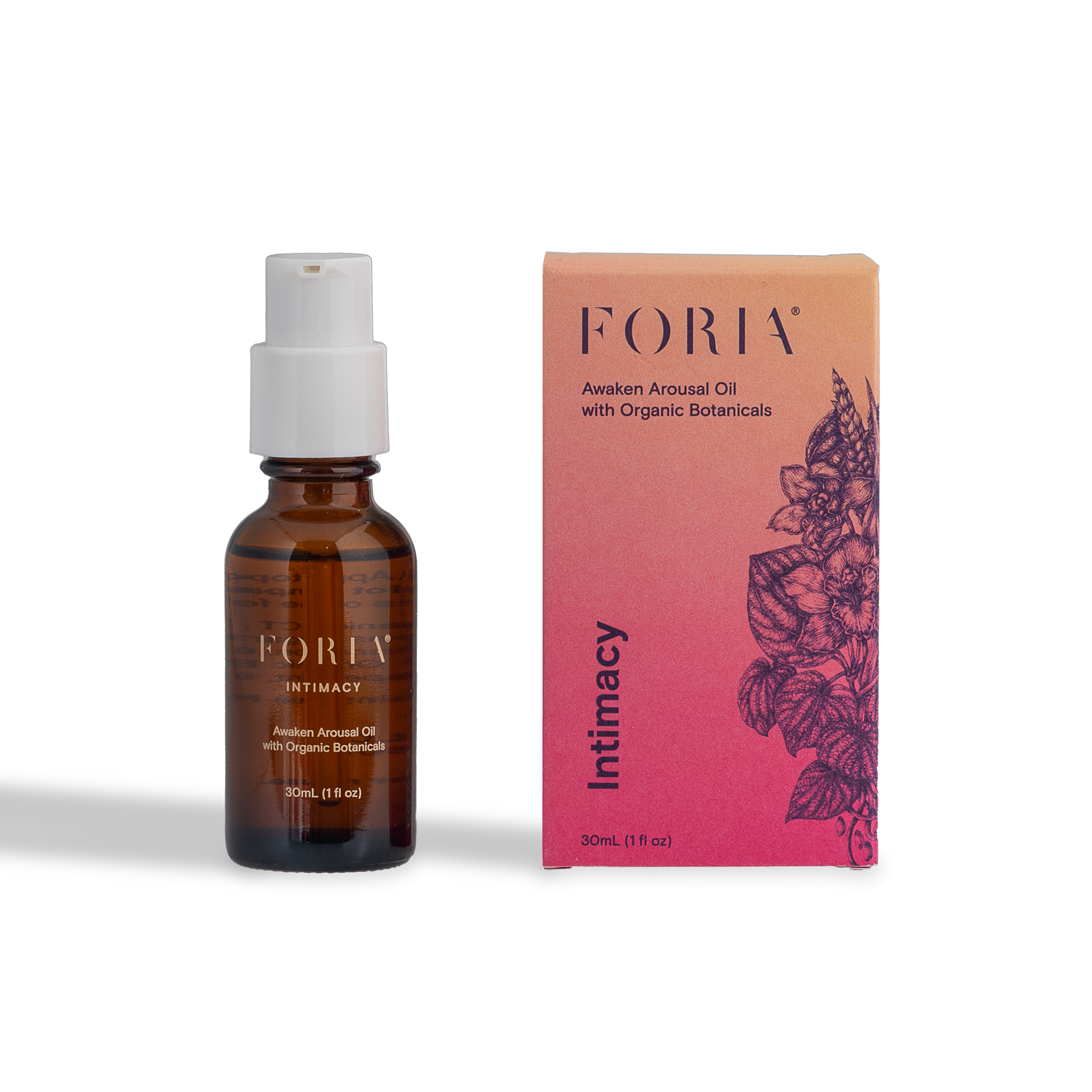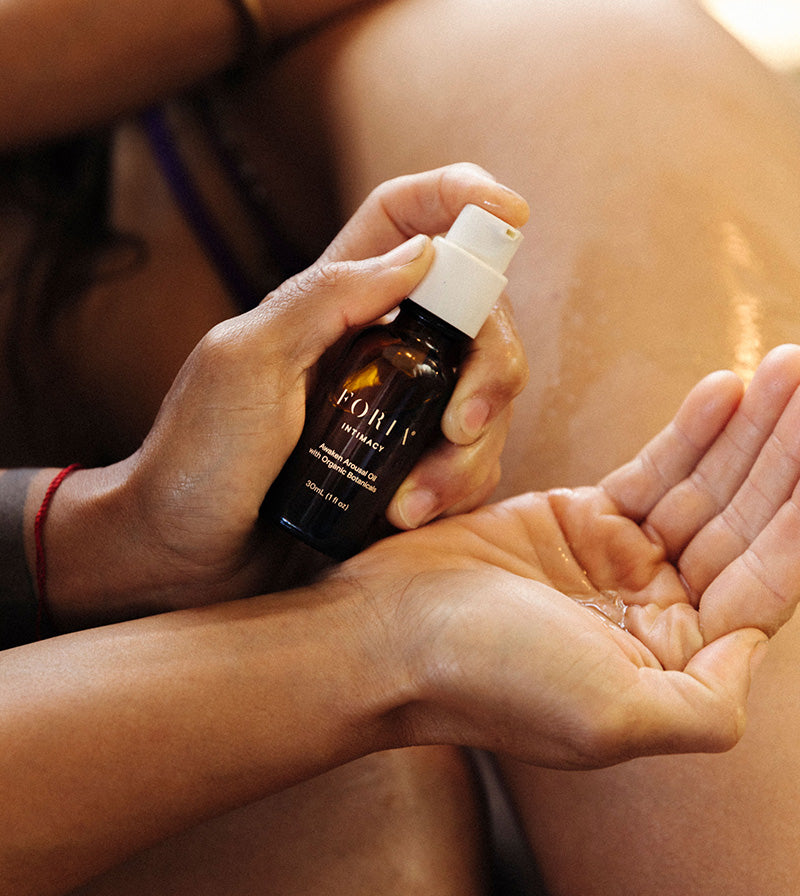Written by: Colleen Gerson
If you’re in need of a balm that tends to the heart, settles the nervous system, and eases anxiety, while holding space for empathy and bringing a renewed sense of wellbeing to the body and mind, Kava Kava is the plant I would offer – to be bathed in and consumed by.
You may think we slather hemp on everything – and, well, we kind of do – but as devoted as we are to cannabis sativa, we are first and foremost lovers and tenders of many plants and the majesty of the natural world. Humans are an incredible intelligent ecosystem in our own right, and part of an incredibly vast and interconnected web of life, speaking words of healing or harm to our genetic code and field, moment-to-moment. We are interwoven with plants in our evolution of body, mind, and spirit, and many have been supporting us for thousands of years, fostering resilience through turmoil.
As you are likely familiar, our cult-favorite Awaken arousal oil is a unique blend of plant aphrodisiacs working together synergistically to orchestrate a symphony of enhanced pleasure and desire. Kava Kava is one of the queens of this formula. It’s made an even stronger debut in some of our all-new products. So what made us fall in love with this plant?
Kava actually shares many similarities to cannabis and hemp, in associated stigma, its array of different varietals, and potent healing properties for body, mind, and heart. We are incredibly excited and honored to share more of this powerful plant ally with you, here and in our formulas!

Origins and Medicine
Kava kava, or piper methysticum, is native to the western Pacific Islands, including Vanuatu, where much of it is cultivated, and has been a vital part of the local culture for thousands of years. With large, heart-shaped leaves speaking to her heart-opening, warming, and empathogen qualities, Kava has a long history of consumption and has played an important role in daily life as well as community gatherings and ceremonies in her native land. Interestingly, this plant is so closely interwoven with human activity that it cannot reproduce on its own, but needs people to propagate it by planting cuttings from a mother plant.
Only the roots are used for medicine or consumption, and as with root medicines in general, Kava is grounding and calming, helping us feel rooted and embodied. You may have heard a lot about adaptogens, for balancing and improving our stress response and longevity, and you might be sprinkling them in your morning latte already. However, another category of herbs, known as nervines, may be even more important for modern humans to familiarize ourselves with – considering the stresses we now experience regularly, especially in 2020.
Nervines down-regulate and nourish the nervous system, and can range from gently anxiety-reducing to more deeply sedative. Kava kava is unique in being both an adaptogen and a potent nervine, and as one of the most widely studied plants after cannabis, the majority of studies have focused on its anxiolytic (anxiety-reducing) and mood-supportive benefits.
In the Pacific Island regions it’s so revered (and frequently consumed) that there are more kava bars than coffee or liquor bars. For those that like to have a cocktail or glass of wine in the evening, it’s shown to be an effective alternative to alcohol, with a similar wind-down and euphoric effect, without any of the negative side-effects – and actually supports restorative sleep instead of disrupting it! (Now I’ve got your attention.)
If you’ve consumed Kava or used Awaken topically, there’s a good chance you’ve felt these effects – a movement of your energy out of your busy, stressed mind, and a warmth in your heart, womb and genitals. We’ll speak to that more later!
This root is traditionally prepared as a beverage, and consumed daily, but primarily for ceremonial purposes or to resolve conflict. Tribal leaders in the Pacific Islands would consume this drink before discussing any conflict or making important decisions. One of my favorite qualities is that it’s highly empathogenic, and an incredible plant for tension, grief or trauma. Quarantined with your partner for months, family tension, political debates? Kava kava is a wonderful ally for opening the heart space, feeling safe to express and move tension and grief, and enhancing empathy and healing.

I’ve given Kava to clients or friends who’ve just gotten in an accident or other traumatic, jarring experience to the nervous system, and personally found it incredibly supportive for intense grief from loss, to move that energy through in a healthy way.
As a mild euphoriant, activating GABA, serotonin and dopamine receptors and encouraging an alpha brain wave state, this plant brings a more calm, clear focus, and even bliss. Like cannabinoids and terpenes in cannabis, Kava contains many active compounds, including kavalactones (also called kava-pyrones). There are 18 known kavalactones, 6 of which are associated with its primary effects, which include: kavain, dihydrokavain, methysticin, dihydromethysticin, yangonin, and desmethoxyyangonin. Yangonin in particular is shown to stimulate the CB1 receptor - the same receptor that THC hits, not in the exact same psychoactive way, but by stimulating relaxation and a gentle euphoric ease.
What’s more, Kava Kava, Miss “Intoxicating Pepper”, is a powerful aphrodisiac! A mover of blood and fluids, particularly to the heart, sacral and root centers, with a warming constitution, this plant seduces our senses, activates libido and enhances pleasure. Surprisingly, despite such a rich history of oral consumption, similar to cannabis, there has been little research reported on topical, particularly genital uses – that is until Foria – but the anecdotal evidence has been rather profound!

Kava Quality and Safety
Cannabis and Kava have both had a rough history legally. Sometime in the past 100 years, both have gone from completely legal, to strictly illegal, to legal again in most places. Kava’s bad rap was due to some faulty studies in the early 2000’s. Around the time that this plant was gaining popularity for its anti-anxiety and relaxation benefits, a pharmaceutical company out of Germany ran some small studies and claimed hepatotoxic (liver-damaging) effects. Kava was then banned in many countries around the world.
Since 2002 there have been many volumes of scientific research, making Piper methysticum one of the most scientifically researched plants in the world (after cannabis), all absolving kava. The cases cited in the original studies involved people using kava in combination with alcohol or benzodiazepine drugs (which are hepatotoxic); additionally, the kava preparations didn’t follow the traditional methods of roots and water, but seemed to use the non-edible toxic stem peelings and leaves. After further study most of the bans have been lifted. The World Health Organization now states, “[Kava has] been considered a safe and enjoyable beverage, based on a long tradition of use and little evidence of harm.” Currently Kava is legal in the USA and most other countries.
Not all Kava is equal
This attention did lead to more regulations on Piper methysticum, helping to ensure quality standards for cultivation and distribution. Similarly to the world of cannabis, there are over 100 recognized strains or chemotypes of Kava, and classified as either a Noble variety or Tudei variety. The Noble are the most traditionally used, most medicinal, safest and strictly regulated.
It is very important to know your source, as much of what is on the market may be of the Tudei variety and unregulated. Look for companies that strictly test for contaminants and list the kava chemocode, to confirm it’s of Noble variety and meeting quality standards. The Kava we source is organically-grown, certified noble Kava, using fair trade practices, and soon to be the first organic-certified in the world. All this being said, we also only use this incredible plant in our topical formulas, to receive many of its benefits and without concern of toxicity.
Contraindications
As with any drug or herb, there may be some contraindications. Piper methysticum taken internally is contraindicated with alcohol, benzodiazepines, or if you have a compromised liver, so speak with your doctor. Similar to grapefruit, both CBD and Kava may inhibit the liver cytochrome P450 enzyme used to metabolize many prescription medications, thus altering the potency of these drugs. Therefore, it is important to be aware of potential herb-drug interactions, and advisable not to consume other drugs or alcohol while taking these herbs internally. With pregnancy, in general the consensus is to avoid most herbs, as it is unethical and illegal to do clinical trials on safety of specific compounds or herbs during pregnancy, so speak with your practitioner and use your own judgement.
Final thoughts
In a world gripped with overwhelm, deeply-felt isolation, and political-social-environmental conflict, Kava may be an answer to what ails us – an invitation to come back to our roots and our hearts. We hope you enjoyed taking this deep dive into another natural ally, and enjoy taking a deep soak into more calm and bliss. Because we need all of us grounded, heart-connected, and resourced to come together and build a world with more empathy, earth-reverence, and healing - and plants offer us many tools to do so.
Resources:
- Asprey, D. (Producer). (2020). Bulletproof Radio episode 731 [Video file]. Retrieved from https://blog.daveasprey.com/wp-content/uploads/2020/08/Kava-Just-May-be-the-Next-CBD-%E2%80%93-Cameron-George-with-Dave-Asprey-%E2%80%93-731.pdf
- Claudia, L., & Smith, K. (2018, September 15). The effectiveness and safety of Kava Kava for treating anxiety symptoms: A systematic review and analysis of randomized clinical trials. Retrieved October 11, 2020, from https://pubmed.ncbi.nlm.nih.gov/30396607/
- Ligresti A;Villano R;Allarà M;Ujváry I;Di Marzo V;. (n.d.). Kavalactones and the endocannabinoid system: The plant-derived yangonin is a novel CB₁ receptor ligand. Retrieved October 10, 2020, from https://pubmed.ncbi.nlm.nih.gov/22525682/
- Poppum, S. (n.d.). Herbal Actions Profile: Nervines. Retrieved October, 2020, from https://www.evolutionaryherbalism.com/wp-content/uploads/2016/11/Nervines.pdf
- Scientific Studies Involving Kava (Piper methysticum). (2020, August 25). Retrieved October 10, 2020, from https://kavaguides.com/kava-research/
- What is Kava?: Kava Root Benefits and Side Effects. (n.d.). Retrieved October 10, 2020, from https://kalmwithkava.com/kava/
- White, M. (2018, May 23). The Pharmacology, Pharmacokinetics, Efficacy, and Adverse Events Associated With Kava. Retrieved October 11, 2020, from https://pubmed.ncbi.nlm.nih.gov/29791008/
- World Health Organization, & Food and Agriculture Organization of the United Nations. Kava: A review of the safety of traditional and recreational beverage consumption. (2016). Retrieved October, 2020, from http://www.fao.org/3/a-i5770e.pdf
Featured in this article
Want more? Sign up for our newsletter
By entering your email, you are agreeing to our terms and conditions and understand our privacy policy.














